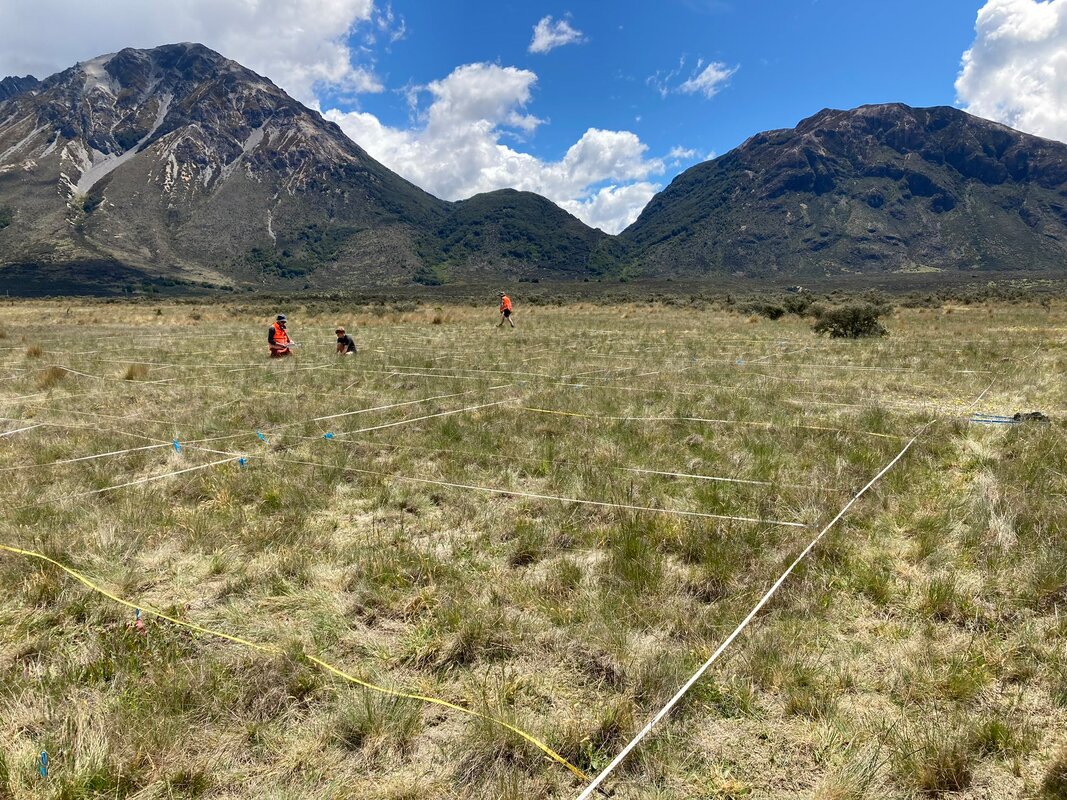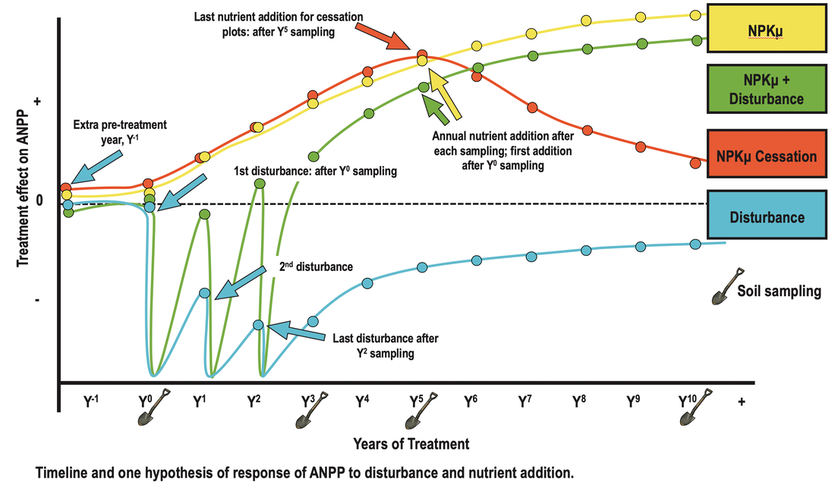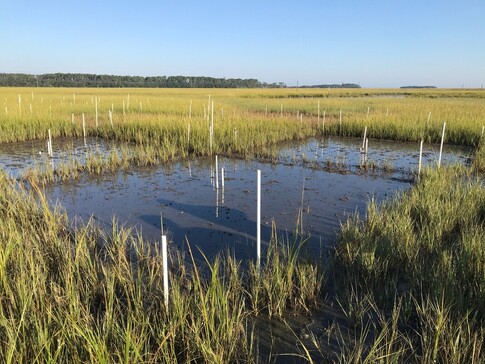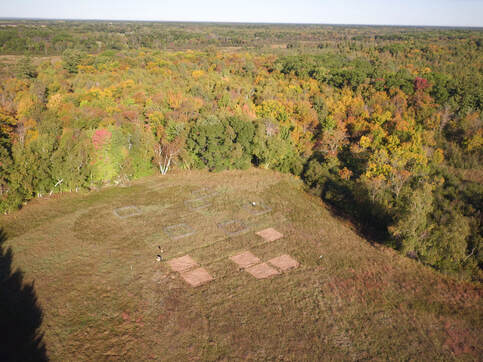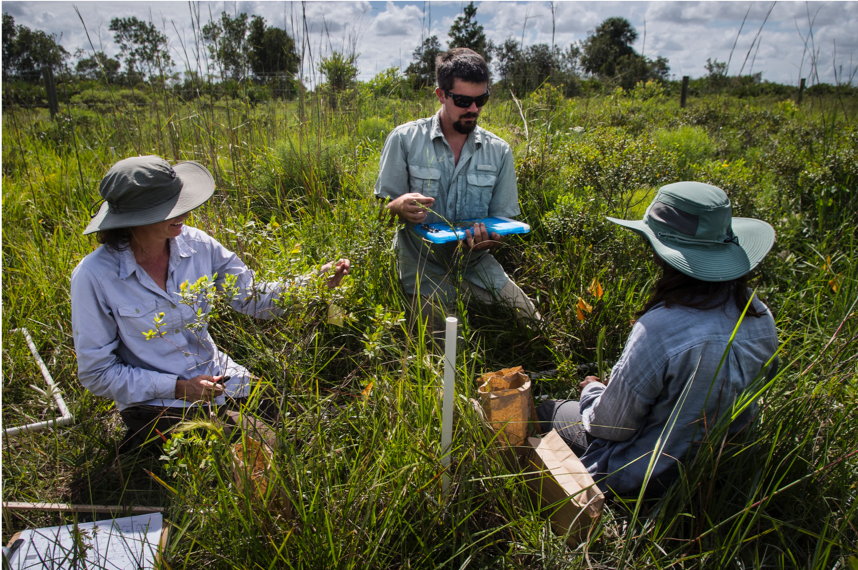Disturbance and Recovery Across Global Grasslands (DRAGNet) is a new global research network aimed at assessing the generality of factors influencing disturbance recovery and community assembly in herbaceous-dominated ecosystems. This network builds on more than a decade of highly successful collaborative research by the Nutrient Network, but examines a new set of theoretically-motivated questions about the effects and interactions of two pervasive global changes: land disturbance and elemental nutrient supply.
With DRAGNet, we are quantifying plant community assembly dynamics and ecosystem recovery under a wide range of biotic and abiotic conditions, and testing whether assembly, recovery rate, or trajectory of plant communities interacts with environmental nutrient enrichment.
This experiment is timely and relevant, as physical disturbances are among the most pervasive impacts of humans on Earth (Ellis 2011; Higgins 2017). Habitat loss via land conversion for agriculture is a leading cause of extinction (Pimm et al. 1995), and biodiversity in grassland systems is particularly affected by land use change (Newbold et al. 2016). Even small-scale disturbances by feral pigs can have long-term impacts on grasslands (Cushman et al. 2004). Although disturbances are an important driver of community dynamics and assembly (Chase 2003; Turner 2010), they now occur concurrent with other human impacts including climate change and nutrient deposition (Steffen et al. 2015).
With DRAGNet, we are quantifying plant community assembly dynamics and ecosystem recovery under a wide range of biotic and abiotic conditions, and testing whether assembly, recovery rate, or trajectory of plant communities interacts with environmental nutrient enrichment.
This experiment is timely and relevant, as physical disturbances are among the most pervasive impacts of humans on Earth (Ellis 2011; Higgins 2017). Habitat loss via land conversion for agriculture is a leading cause of extinction (Pimm et al. 1995), and biodiversity in grassland systems is particularly affected by land use change (Newbold et al. 2016). Even small-scale disturbances by feral pigs can have long-term impacts on grasslands (Cushman et al. 2004). Although disturbances are an important driver of community dynamics and assembly (Chase 2003; Turner 2010), they now occur concurrent with other human impacts including climate change and nutrient deposition (Steffen et al. 2015).
|
GOALS
The primary goals of DRAGNet are to:
|
DESIGN & IMPLEMENTATION
Our detailed protocols are described on our website. In brief, each DRAGNet site will consist of a set of 3-5 blocks (spatial replicates), each with five, 5 x 5 m plots receiving one of five treatments: 1. Long-term nutrient addition; 2. Physical disturbance (annual removal of standing vegetation, litter, rhizomes and tilling of the soil); 3. Nutrient addition combined disturbance; 3. Short-term nutrient addition followed by cessation; or 5. No treatments (Controls). Response variables will be the same as in the NutNet experiment (plant species composition, aboveground standing crop, light intercepted by the plant canopy, and soil chemistry), but will also include an optional seed bank and seed rain study. The design has built-in flexibility for site-level or regional add-on studies such as trapping insects, measuring plant traits, or tracking small mammal granivory.
The time and effort to disturb the plots will vary among sites, depending on vegetation, soils, etc. However, post-disturbance field sampling, plant sorting, and data entry generally requires about 1-3 days for 2-3 people. The design also is modular; a one-time pre-treatment sampling (“observational dataset”) has proven extremely valuable for addressing a wide variety of questions. We cannot provide funds for this project, but we have designed it to be inexpensive (see Time and Financial Costs under Protocol). For example, maintenance of the nutrient treatment plots is only the cost of fertilizer (about $50 per year for US participants).
Our detailed protocols are described on our website. In brief, each DRAGNet site will consist of a set of 3-5 blocks (spatial replicates), each with five, 5 x 5 m plots receiving one of five treatments: 1. Long-term nutrient addition; 2. Physical disturbance (annual removal of standing vegetation, litter, rhizomes and tilling of the soil); 3. Nutrient addition combined disturbance; 3. Short-term nutrient addition followed by cessation; or 5. No treatments (Controls). Response variables will be the same as in the NutNet experiment (plant species composition, aboveground standing crop, light intercepted by the plant canopy, and soil chemistry), but will also include an optional seed bank and seed rain study. The design has built-in flexibility for site-level or regional add-on studies such as trapping insects, measuring plant traits, or tracking small mammal granivory.
The time and effort to disturb the plots will vary among sites, depending on vegetation, soils, etc. However, post-disturbance field sampling, plant sorting, and data entry generally requires about 1-3 days for 2-3 people. The design also is modular; a one-time pre-treatment sampling (“observational dataset”) has proven extremely valuable for addressing a wide variety of questions. We cannot provide funds for this project, but we have designed it to be inexpensive (see Time and Financial Costs under Protocol). For example, maintenance of the nutrient treatment plots is only the cost of fertilizer (about $50 per year for US participants).
DATA SHARING
Our guidelines for network participation are the same as NutNet. The collaborative nature of DRAGNet requires that all scientists must be willing to share their core data with others in the network. We request that collaborators send us their site’s core data within 3 months of collection. All network members can access the network data thereafter, following network guidelines. Our goal is for project data to go into the public domain three years after collection or upon first publication.
Our guidelines for network participation are the same as NutNet. The collaborative nature of DRAGNet requires that all scientists must be willing to share their core data with others in the network. We request that collaborators send us their site’s core data within 3 months of collection. All network members can access the network data thereafter, following network guidelines. Our goal is for project data to go into the public domain three years after collection or upon first publication.
|
BENEFITS
One of the greatest advantages of contributing to DRAGNet, besides the collection of comparable data across continents, will be interacting with a collaborative network. In addition to many opportunities for coauthorhsip on DRAGNet publications, participants will be welcome to collaborate on research that uses over a decade of NutNet data from more than 100 sites around the world. DRAGNet also provides an experimental platform with capacity to answer research questions not yet envisioned, either via either analyses of core data or “add-on” studies that require new measurements. |
Contact the Network Coordinator, Ingrid Slette ([email protected]), to find out more about DRAGNet and to get involved!
References
Borer, E.T., Grace, J.B., Harpole, W.S., MacDougall, A.S. & Seabloom, E.W. (2017). A decade of insights into grassland ecosystem responses to global environmental change. Nat. Ecol. Evol., 1, 1–7
Cushman, J., Trisha A. Tierney, & Jean M. Hinds. 2004. Variable Effects of Feral Pig Disturbances on Native and Exotic Plants in a California Grassland. Ecological Applications, 14(6), 1746-1756
Ellis, E.C. (2011). Anthropogenic transformation of the terrestrial biosphere. Philos. Trans. R. Soc. A Math. Phys. Eng. Sci., 369, 1010–1035 Higgins, S.I. (2017). Ecosystem assembly: A mission for terrestiral Earth system science. Ecosystems, 20, 69–77
Newbold, T., Hudson, L.W., Arnell, A.P., Contu, S., De Palma, A., Ferrier, S., et al. (2016). Has land use pushed terrestrial biodiversity beyond the planetary boundary? A global assessment. Science (80-. )., 354, 288–291
Pimm, S.L., Russell, G.J., Gittleman, J.L. & Brooks, T.M. (1995). The future of biodiversity. Science (80-. )., 269, 347–350
Steffen, W., Richardson, K., Rockstrom, J., Cornell, S.E., Fetzer, I., Bennett, E.M., et al. (2015). Planetary boundaries: Guiding human development on a changing planet. Science (80-. )., 347, 737–747
Turner, M.G. (2010). Disturbance and landscape dynamics in a changing world. Ecology, 91, 2833–2849
Cushman, J., Trisha A. Tierney, & Jean M. Hinds. 2004. Variable Effects of Feral Pig Disturbances on Native and Exotic Plants in a California Grassland. Ecological Applications, 14(6), 1746-1756
Ellis, E.C. (2011). Anthropogenic transformation of the terrestrial biosphere. Philos. Trans. R. Soc. A Math. Phys. Eng. Sci., 369, 1010–1035 Higgins, S.I. (2017). Ecosystem assembly: A mission for terrestiral Earth system science. Ecosystems, 20, 69–77
Newbold, T., Hudson, L.W., Arnell, A.P., Contu, S., De Palma, A., Ferrier, S., et al. (2016). Has land use pushed terrestrial biodiversity beyond the planetary boundary? A global assessment. Science (80-. )., 354, 288–291
Pimm, S.L., Russell, G.J., Gittleman, J.L. & Brooks, T.M. (1995). The future of biodiversity. Science (80-. )., 269, 347–350
Steffen, W., Richardson, K., Rockstrom, J., Cornell, S.E., Fetzer, I., Bennett, E.M., et al. (2015). Planetary boundaries: Guiding human development on a changing planet. Science (80-. )., 347, 737–747
Turner, M.G. (2010). Disturbance and landscape dynamics in a changing world. Ecology, 91, 2833–2849

